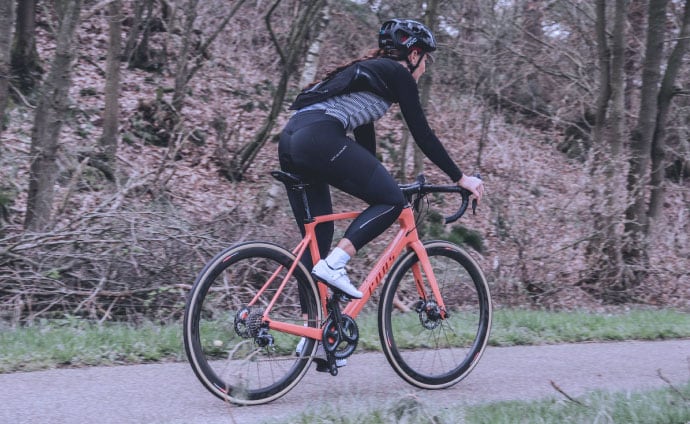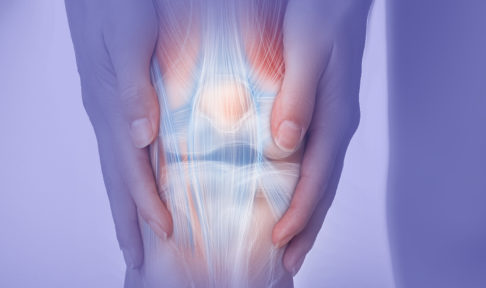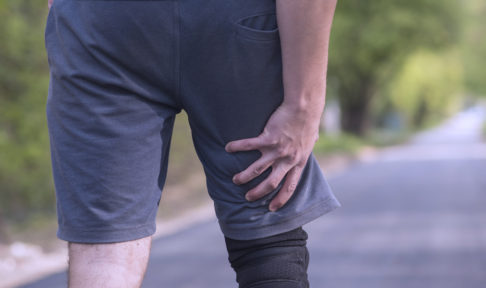There’s a reason cycling is a favourite activity among people all over the world – from commuters who rely on their bike for transport, to lycra-clad cycling fanatics or those who simply enjoy a social cruise with friends on the weekend.
But despite cycling’s popularity among both amateurs and enthusiasts, cycling injuries remain some of the most common we see in our London physio clinic. And specifically there is a huge cause between cycling and knee issues, with 40% to 60% of riders reportedly suffering from knee pain at some point in their lives.
But what causes knee pain in cyclists? And what can you do to alleviate it or, better yet, avoid it entirely? At Spectrum, the treatment we recommend for your knee pain will always be personalised, depending on the cause and your personal situation.
Here are the three reasons why you might be suffering after your two-wheeled adventures and how we might fix it.

1. Poor bike setup
When you present with knee pain, one of the first things your physio is likely to ask you about is your bike setup – because if it’s wrong it can cause you all sorts of issues.
While we’ll always recommend you visit your local bike shop for a professional fitting, we will be able to confirm whether it sounds like your bike setup is the reason for your discomfort in the first place. For example, if your bike seat is the wrong height for you, it could be causing your glutes to switch off while you pedal. This means your quads and hip flexors have to work overtime, and the resultant pulling down the front of your upper legs can refer pain into your knees.
Another setup area to look out for are your bike pedals. If you’re using cleats, you’ll need to make sure you’re adjusting them to the correct position, otherwise, you may find that your pedal rotation is off which can lead to misalignment and pain in your knee, or even referred pain into your knee from poor ankle rotation.
2. Incorrect sitting or cycling position
Once you’re sure your bike is set up well, it’s time to check that you’re actually sitting in the saddle correctly. This is known as your global positioning on the bike.
If you’re experiencing knee pain during or after riding, it could be because you’ve sat too far forward in the saddle, which causes your quad to put too much pressure through your knee as opposed to your glute doing the heavy lifting from behind.
Other postural issues could include your knees crossing over the stem of the handlebars or your ankles turning in as you pedal. Once we help you identify these technique inconsistencies, it’s important you’re observant and self-critical as you ride, so you can correct any issues that you notice as you go to help build better habits over time.
Alternatively, even if your bike riding posture and techniques while you’re in the saddle are good, it’s possible that you have other issues in these areas throughout the day – particularly if you spend a lot of time sitting at work. Once you get moving, these problems can catch up with you, so we may need to work with you to correct these postural problems so they don’t flare up every time you jump on your bike.
3. Weakness or tightness
It’s a physio adage as old as time, but if you’re suffering from pain or discomfort while exercising, the first thing you should focus on is strengthening the areas that are weak and loosening the areas that are tight.
When it comes to cycling-related knee pain, you could be seeing tightness in the lateral thigh, which is normally a result of not doing enough mobility work. In this case, foam rolling and stretching is often your first port of call, to work some flexibility and suppleness back into the muscles.
Or it could be that your core strength is lacking, impacting your ability to strengthen your glutes, which will mean the brunt of your pedalling is being absorbed by your knees instead. If your glutes need a little extra encouragement to switch on, using a TENS machine while doing guided exercise therapy in our clinic gym can help teach your glutes how to engage better.
Generally speaking, when it comes to knee pain, you’ll always be sent home from your physio sessions with homework in the form of mobility or strength exercises to do yourself in between appointments. And anytime there’s inflammation, our GameReady Ice Compression unit will be a good starting point, to help reduce the swelling, relieve pain and help speed up your recovery so you can get back to cycling pain-free as quickly as possible.
Do you suffer from cyclist’s knee? Book an appointment at Spectrum and you’re guaranteed a time within 24 hours, so you can start your road to recovery straight away.



